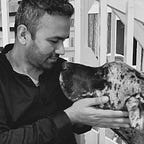Mario Kart Tour’s Rubber-Banding is at Odds with its Monetisation
Mario Kart Tour is a f2p go-kart racing game, developed and published by Nintendo, where players collect drivers, karts and gliders from the Mario franchise and race against other players to on courses inspired by real-world cities in addition to classic Mario Kart courses.
The Mario Kart games are primarily party games, meant to be enjoyed by an audience of various skill levels with a gentle learning curve and races in which player elimination is rare. When players drive into item boxes on the course they obtain a power-up item that is rolled from a dynamic item distribution — the game’s rubber-banding mechanic that ensures victory is within reach for all players for the duration of the race.
The Dynamic Item Distribution
When players pick up an item box on the course, depending on their position in the race at the time the item box was picked, they obtain a pseudo randomly chosen power-up item.
This dynamic item distribution favours players lagging in the race, rewarding them with powerful power-ups like invincibility stars or a devastating blue shell and punishes players at the front of the race with weak power-ups like banana peels and coins that grant meager speed boosts.
This rubber-banding ensures all players are constantly interacting with reach other over the entire race, balances out the skill gap between players, maintains the humour and party-like atmosphere.
A Contradiction of Goals
A common core loop among benchmark f2p racing games in the progression inherent in collecting and upgrading vehicles. Rarer vehicles with better stats have an advantage in looks and performance over common vehicles with lesser stats. With the goal of winning races, players are always in anticipation of collecting rarer cars and strive for upgrading them completely.
The rubber-banding mechanic inherently poses a problem with this core loop as stats and rarity get balanced out and maintained at equilibrium in the race. The solution that Mario Kart Tour has opted for is to change the goal from ‘win the race’ to ‘score the most points in a race’.
A Race to Score Points
Each race in Mario Kart Tour scores points in three ways:
• The driver, kart and glider chosen for the race have a Base Points score that gets awarded before the race begins.
• Bonus Points are earned by performing actions during a race, like hitting another player with an item, and have a score multiplier that depends on the driver, kart and glider.
• At the end of race Position Points are granted based on the finishing position in the race and have a score multiplier that depends on the driver, kart and glider.
Maximising race points drives the gacha based monetisation for collecting a diverse loadout of drivers, karts and gliders. Winning a race does grant additional points but each race course has its own affinity towards a loadout combination, hence the more of them unlocked, the better the race points scored.
Higher the rarity and levels of the loadout combination, higher the score multiplier for bonus and position points. Earning more race points increases the leaderboard ranking and wins more stars that grant progress on the battle pass style reward vector.
Collecting and levelling up the loadout give an advantage over other players as well as different race courses also give specific drivers more slots to carry items, certain karts a speed boost and some gliders a higher chance to roll a better power-up from the item box.
Mario Kart Tour’s points based progression rewards players for collecting and levelling up a roster of drivers, karts and gliders with affinity on the various rolling race courses. The feedback loop of its central rubber-banding mechanic however ensures its audience experience the joy in racing irrespective of their loadout which detracts from the satisfaction of filling up progress bars and spending money to fast track on them.
